Understanding Fractions: A Comprehensive Guide for Kids
Table of Contents
Introduction
Fractions
Fractions are an essential part of mathematics and are used to represent parts of a whole or a collection of objects. Understanding fractions is crucial for kids as it helps them grasp the concept of sharing, dividing, and comparing quantities.
Analogy of Definition
What are Fractions?
A fraction represents a part of a whole or a collection and consists of a numerator (the top number) and a denominator (the bottom number). The numerator indicates the number of parts being considered, while the denominator represents the total number of equal parts that make up the whole or the collection.
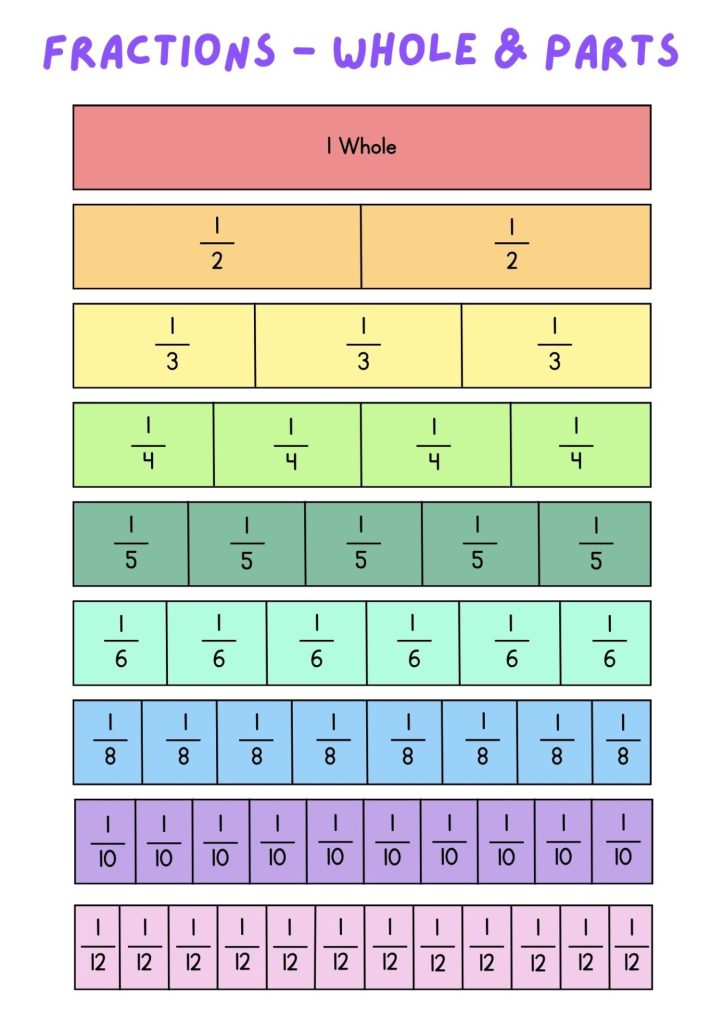
Equal and Unequal Parts
Fractions are equal parts of a whole object or group of objects.
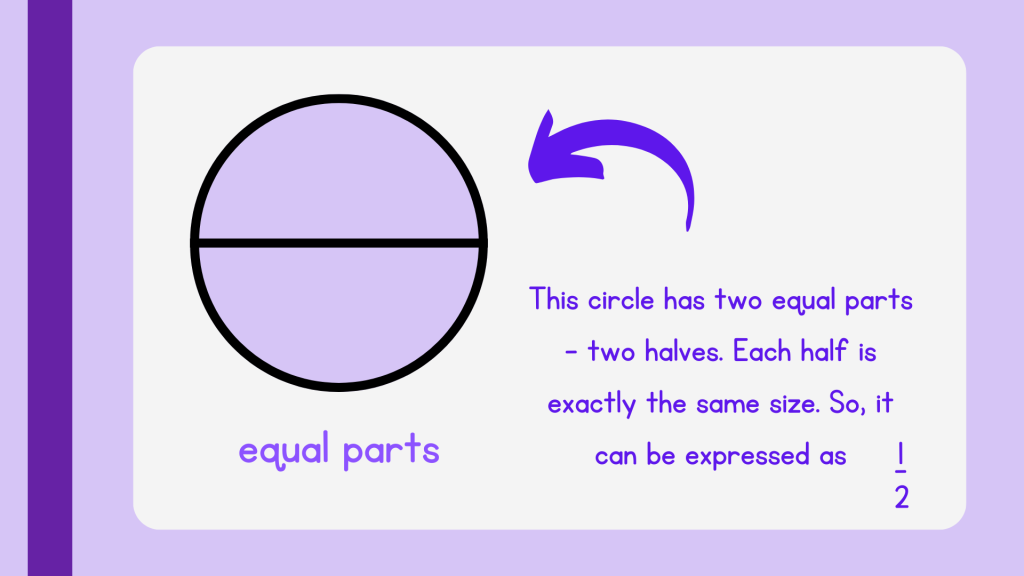
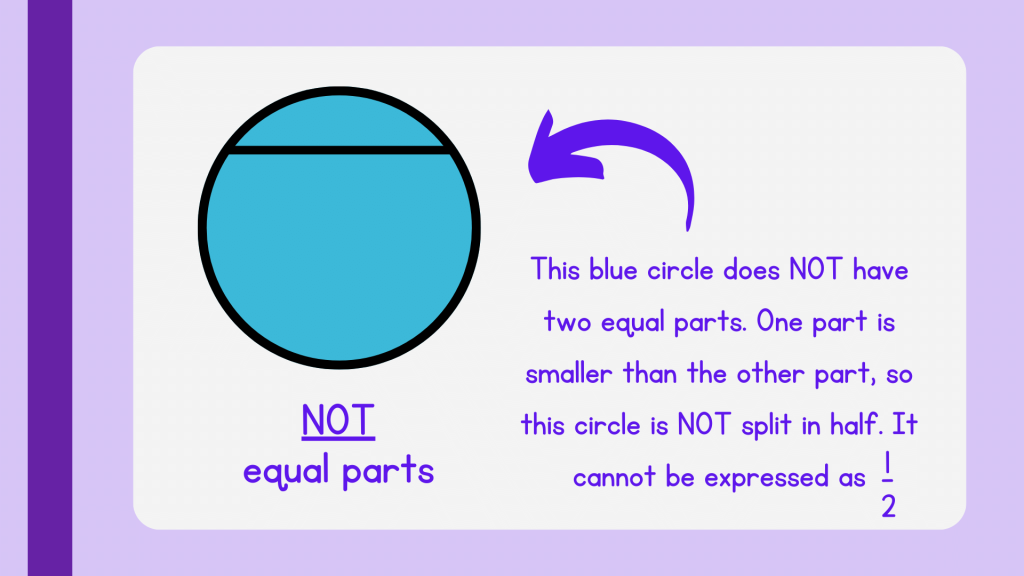
Method
Ways to Represent a Fraction
Fractions can be represented in various ways, including the fractional form (e.g., 3/4), decimal form (e.g., 0.75), and percentage form (e.g., 75%). Each representation provides a different way of understanding and visualizing the fraction.
Fractional Representation
Fractions are commonly expressed as \frac{a}{b}, in which ‘a’ is the numerator whereas ‘b’ is the denominator. It represents the fraction is of ‘a’ parts when a whole of divided into ‘b’ parts. We can take a numeral example to understand.
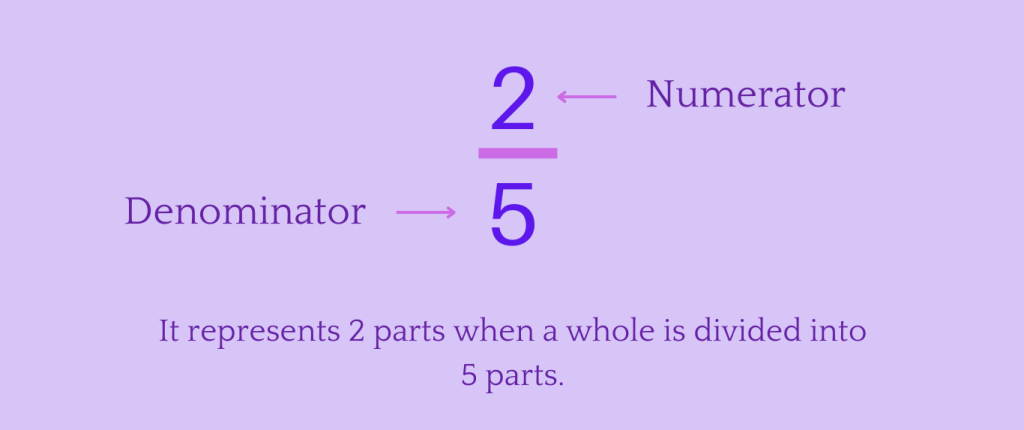
Fractions as Decimal Number
Fractions can also be represented in a decimal form. To express a fraction in a decimal format, we divide the numeration by the denominator.
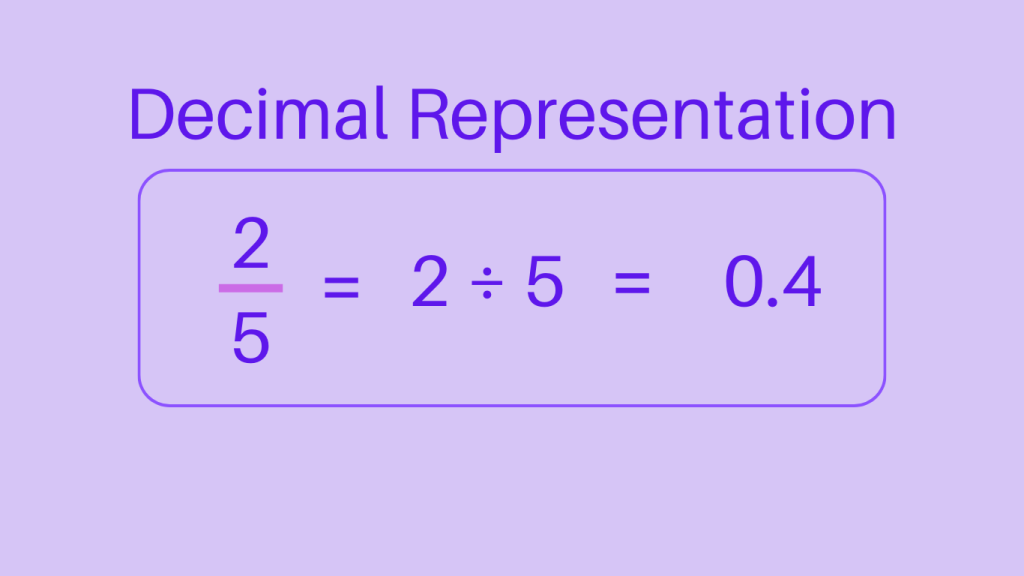
Percentage Representation
A fraction can also be represented in percentage form. We multiply the fraction by 100 to convert it into percentage.
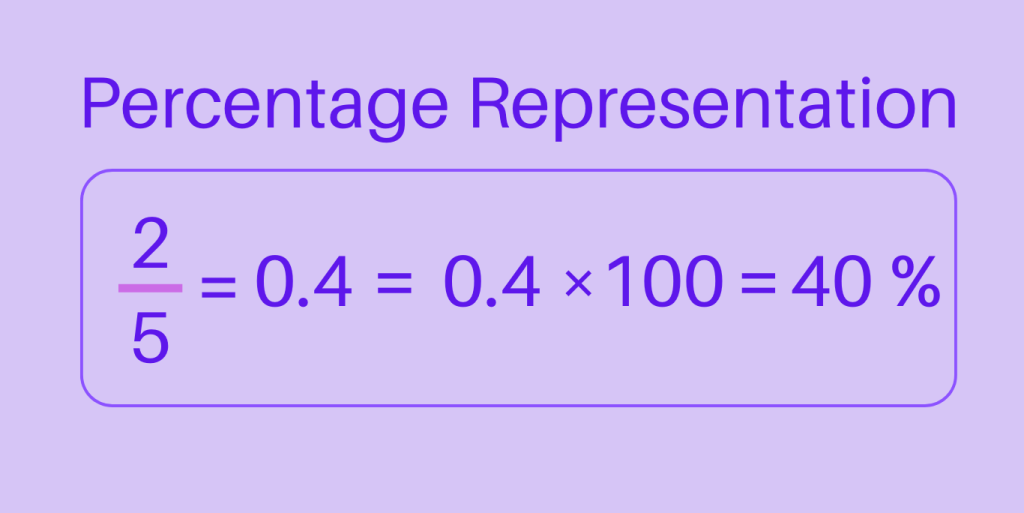
Fractions on a Number Line
A number line is a visual representation of numbers, and fractions can be plotted on a number line to show their position between whole numbers. This helps kids understand the relative size and value of different fractions.
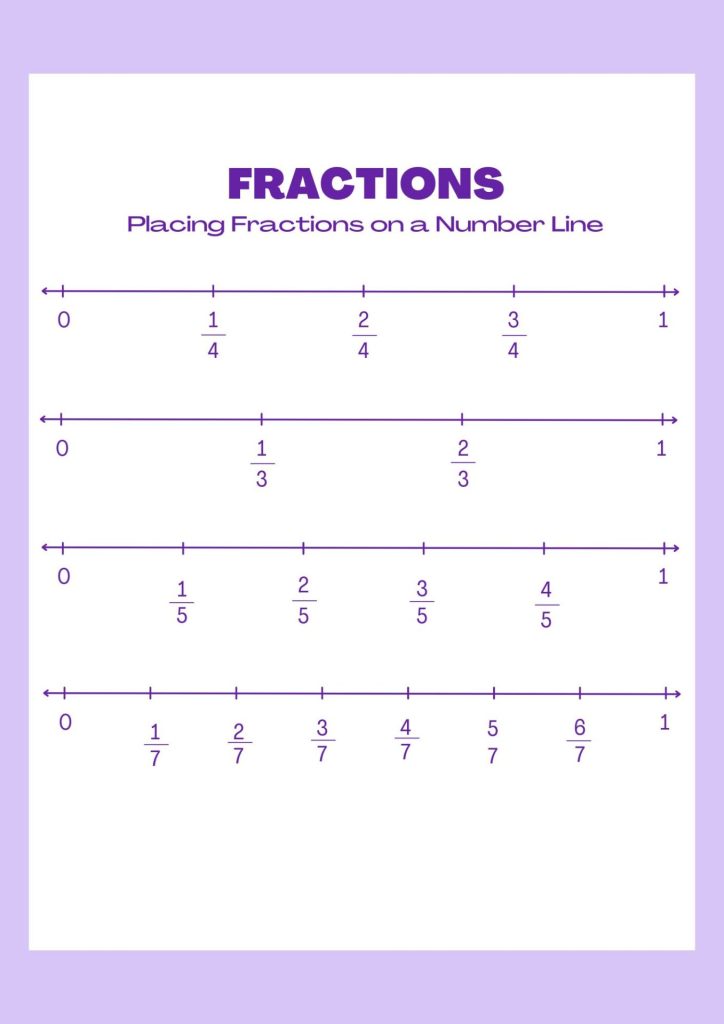
Understanding Different Types of Fractions
Fractions can be classified into various types based on their properties and relationships. These include unit fractions, proper fractions, improper fractions, mixed fractions, like fractions, unlike fractions, and equivalent fractions.
Unit fraction: A fraction where the numerator is 1. Example:\frac{1}{4} (one-fourth).
Proper fraction: A fraction where the numerator is less than the denominator. Example:\frac{3}{5}(three-fifths).
Improper fraction: A fraction where the numerator is greater than or equal to the denominator. Example:\frac{7}{4} (seven-fourths).
Mixed fraction: A whole number combined with a proper fraction. Example: 2\frac{1}{3} (two and one-third).
Like fraction: Fractions that have the same denominator. Example: \frac{2}{5} and \frac{3}{5}.
Unlike fraction: Fractions that have different denominators. Example:\frac{1}{3} and \frac{2}{5}.
Equivalent fraction: Fractions that represent the same value but may have different numerators and denominators. Example: \frac{1}{2} and \frac{2}{4}are equivalent fractions.
Understanding Fractions for Kids
For kids, learning about fractions can be made fun and engaging by using relatable examples. They can understand fractions as a part of a whole, such as a fraction of a pizza or a fraction of a cake. Additionally, they can explore fractions as a part of a collection of objects, such as a fraction of a set of toys.
Examples
Examples of Fractions for Kids
Fraction of a Whole: If a pizza is divided into 8 equal slices and 3 slices are eaten, the fraction of the pizza eaten is 3/8.
Fraction of a Collection of Objects: If there are 10 marbles, and 4 of them are blue, the fraction of blue marbles is 4/10.
Quiz
Tips and Tricks
1. Understanding Fractions as Parts of a Whole
Scenario: Explaining fractions using relatable examples for kids.
Tip: Use everyday objects such as pizzas, cakes, or candies to demonstrate fractions as parts of a whole. This helps kids visualize and understand the concept better.
2. Visualizing Fractions on a Number Line
Scenario: Helping kids understand the relative size of fractions.
Tip: Use a number line to visually represent fractions and show their position between whole numbers. This helps kids compare and order fractions.
3. Exploring Equivalent Fractions
Scenario: Introducing the concept of equivalent fractions to kids.
Tip: Show kids how different fractions can represent the same part of a whole or a collection. Use visual aids and manipulatives to demonstrate equivalent fractions.
4. Identifying Types of Fractions
Scenario: Teaching kids about the different types of fractions.
Tip: Engage kids in activities that involve identifying and categorizing fractions based on their properties. Use examples to illustrate each type of fraction.
5. Converting Fractions to Decimals and Percentages
Scenario: Introducing kids to different ways of representing fractions.
Tip: Show kids how fractions can be converted to decimals and percentages to provide alternative ways of understanding and expressing the same quantity.
Real life application
Story: “The Fraction Adventure of Emma and Noah”
Emma and Noah were two curious kids who loved exploring the world around them. As they ventured through various real-life scenarios, they encountered fractions in everyday situations, learning how fractions are used in practical ways.
Scenario 1: Baking with Fractions
Emma and Noah decided to bake cookies and followed a recipe that required 3/4 cup of flour. They used measuring cups to accurately measure the fraction of flour needed for the recipe, understanding the importance of precise measurements in baking.
Scenario 2: Sharing Treats Equally
During a playdate, Emma and Noah had a box of chocolates to share with their friends. They divided the chocolates into equal parts, ensuring that each friend received a fair fraction of the treats. This helped them understand the concept of fair sharing and fractions as parts of a whole.
Scenario 3: Understanding Discounts
While shopping with their parents, Emma and Noah noticed a store offering a 25% discount on toys. They realized that the discount represented a fraction of the original price, and they calculated the discounted amount using their knowledge of percentages and fractions.
Scenario 4: Measuring Ingredients
In the kitchen, Emma and Noah helped their parents measure ingredients for a recipe. They used measuring spoons to add 1/2 teaspoon of salt, understanding how fractions are used in cooking and baking to ensure the right balance of flavors.
Scenario 5: Planning a Garden
Emma and Noah decided to plant a garden with different types of flowers. They used a plan that divided the garden into sections, each representing a fraction of the total area. This helped them visualize and plan the layout of the garden effectively.
FAQ's
Like? Share it with your friends
